Along the southeastern coast of Tasmania are the highest sea cliffs in the world, and the only way to really appreciate them is by boat. The best place to do that (even if the cliffs there are only the second-highest in the state) is South Bruny Island, where Bruny Island Tours runs daily cruises along the cliff base. I knew Ryan would get a bang out of the trip, and I expected that I would too. Eileen is nervous around boats, and was not so sure, but she was a very good sport about it. On March 20, 2014, therefore we drove south from Hobart and took the car ferry from the mainland over to Nortth Bruny.
The sea cliffs are on South Bruny, but the drive there still took us through some attractive countryside on North Bruny.
Eventually the road crosses a sandy neck that connects the two islands.
The Bruny Island Neck Game Reserve protects an attractive sandy beach on the ocean side of the island (Ryan and I hiked across to it later that day, on our way back to Hobart).
On the way down I stopped to photograph a few of the birds along the shore: here (in a shot from the car by Eileen) is a group of Crested Terns (Sterna bergii) with a Kelp Gull (Larus dominicanus) in the background.
Here, too, were both species of Australian oystercatcher: the black-and-white Pied Oystercatcher (Haematopus longirostris)...
...and the all-black Sooty Oystercatcher (Haematopus fuliginosus).
The bird that really caught my eye, though, was this one: a Pacific Gull (Larus pacificus), one of the largest gulls in the world, on a bit of beach near the tour-boat office (located at "Adventure Bay", a name that is either a nice bit of history or a nice bit of marketing). The immense, swollen beak is its most striking feature; no other gull has anything like it.
Despite its size, the Pacific Gull is being displaced by invading Kelp Gulls (a species that only spread to Australia in the twentieth century) in parts of its range. Pacific Gulls are confined to the coasts of southern Australia, and this bird was the first I had seen since first meeting the species in 1974.
We had booked for the 11 AM Wilderness Cruise, and had to be there by 10:30 to (among other things) get suited up in appropriate weather gear (we had been advised to dress warmly, but the cruise operators provided the red waterproof jackets just in case).
At the boat launch the coast was low and sandy....
...but as we headed south, the cliffs soon began to rise out of the mist.
To see them, we had to round the hook-like promontory of Fluted Cape and sail along the southeastern reaches of the island.
The occasional Kelp Gull followed us for a bit, presumably under the impression that we were a fishing boat. We saw no more Pacific Gulls, though. According to a comparative study in Tasmania, Pacific Gulls are mainly shoreline feeders that more or less specialize on crabs and mollusks they find on the beach (crabs were found in 56% of Pacific Gull pellets, but only 11% of Kelp Gull pellets).
A feature of the cliffside scenery, as we headed south, was the impressive number of sea-caves and blowholes in the rock fact.
The cliffs themselves, great slabs of Jurassic dolerite (a volcanic rock something like basalt; Stonehenge is made of the stuff), rose out of the sea to the stands of eucalypt scrub far above our heads.
Every now and then the cliff face was smeared with a great patch of white guano, the sign of a colony of Black-faced Cormorants (Phalacrocorax fuscescens).
The Black-faced Cormorant, the most strictly marine of Australia's cormorants, is (like the Pacific Gull) found only along Australia's southern coasts. Tasmania lies at the eastern end of its range.
The birds gaping at each other in this photo give an idea of the extent to which cormoranta can flex their bills upwards - not around a joint, but by bending a thin sheet of bone at the bill's base, an ability called rhynchokinesis.
At the base of the cliffs, as high up as wave and tide could reach, great ribbons of kelp hung down into the sea.
Giant Kelp (Macrocystis pyrifera), one of two species in Australia, grows along the southern and eastern coasts of Tasmania. Its populations appear to be dwindling, possibly as a result of dieback in El Niño years.
Our boat took us close enough to the rocks to see at least some of the community of shelly animals clinging to their lower reaches.
They included animals extremely well-adapted for clinging to wave-pounded rocks: rock barnacles, and molluscs such as Scaly Limpet (Scurellastra peronii) and the Snakeskin Chiton (Sypharochiton pelliserpentis), the latter with its typical shell of eight overlapping plates surrounded by a tough, distinctively banded girdle.
Farther south, our boat passed through a knot of seabirds - perhaps attracted there by upswellings bringing their prey to the surface from the ocean floor. I photographed one immature Australasian Gannet (Morus serrator), fresh from an apparently successful dive.
Most of the birds, though (to my great delight), were albatrosses, birds I never tire of seeing (especially these days, when their numbers have fallen drastically as they drown on longline fishing hooks).
We found three species, and you can see all of them - Black-browed, Buller's and Shy - in these photographs, plus (in this shot) a White-fronted Tern (Sterna striata) flying past. You'll see below that the three have rather differently-proportioned bills, though all feed, to varying degrees, on cephalopods and fishes (The Black-browed, though, is mainly a crustacean feeder, preferring various species of pelagic shrimp).
Black-browed Albatrosses (Thalassarche melanophris) were the most abundant. If you look closely, you can see a metal band on the left leg of the middle bird. Black-browed Albatrosses breed on Australia's subantarctic islands, and are common visitors to much of its southern and eastern coasts.
Most of the Black-broweds were immatures, most easily told from the others in flight by the broad (as opposed to narrow) black edging on the underside of the wing.
Adults, with their bright yellow, reddish-tipped bills, are altogether more striking (and easier to identify).
Here, with a Black-browed Albatross for size, bill and plumage comparison, are two Buller's Albatrosses (Thalassarche bulleri).
Buller's Albatross, perhaps the handsomest of the family, is a New Zealand breeder that only visits Australia's southeastern coasts. I had had splendid looks at them off Kaikoura, on New Zealand's South Island, a few years earlier, but was always happy to see them again.
The third species, the heavy-billed Shy Albatross (Thalassarche cauta), was once lumped with two of the Kaikoura Albatrosses, the White-capped (T. steadi) and Salvin's (T. salvini) (plus one other, the Chatham Albatross (T. eremita)). Now it is regarded as a species on its own, confined (as a breeder) to Australian waters. Or, if you prefer, Shys and White-caps can be kept in the same species, with our bird called the Tasmanian Shy Albatross (T. cauta cauta) - the two are very hard to tell apart, and very similar genetically (separated by a genetic distance of only 0.2%). They're pretty wonderful birds, whatever they are.






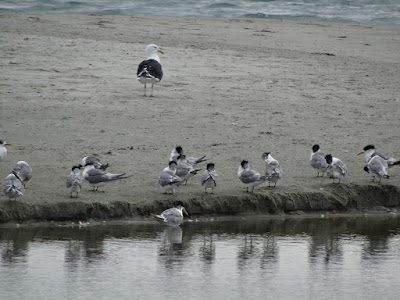
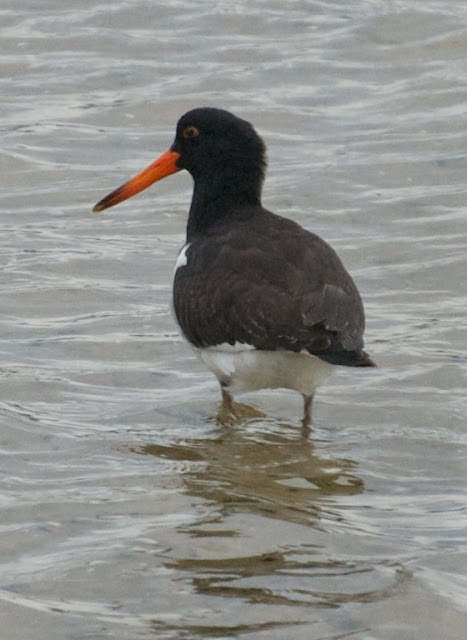




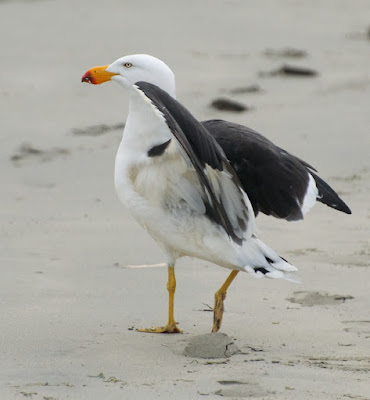


















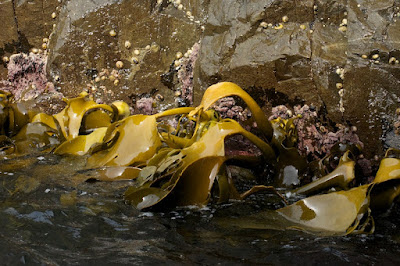

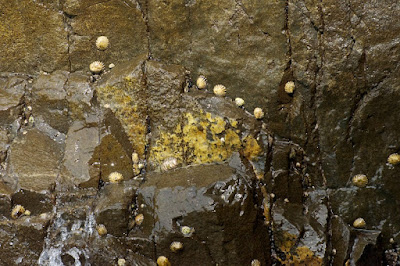


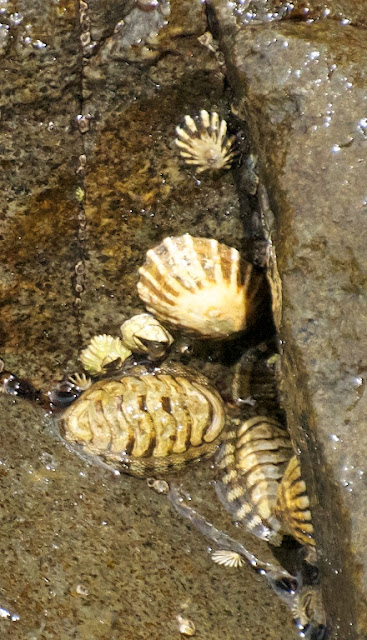




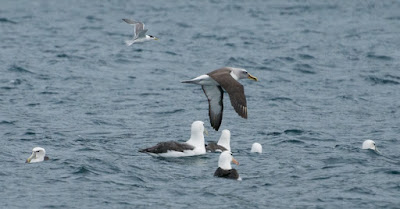








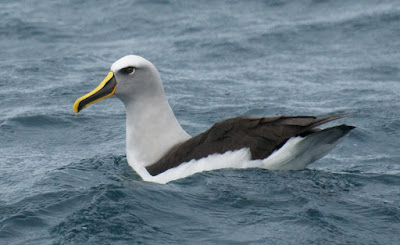


No comments:
Post a Comment